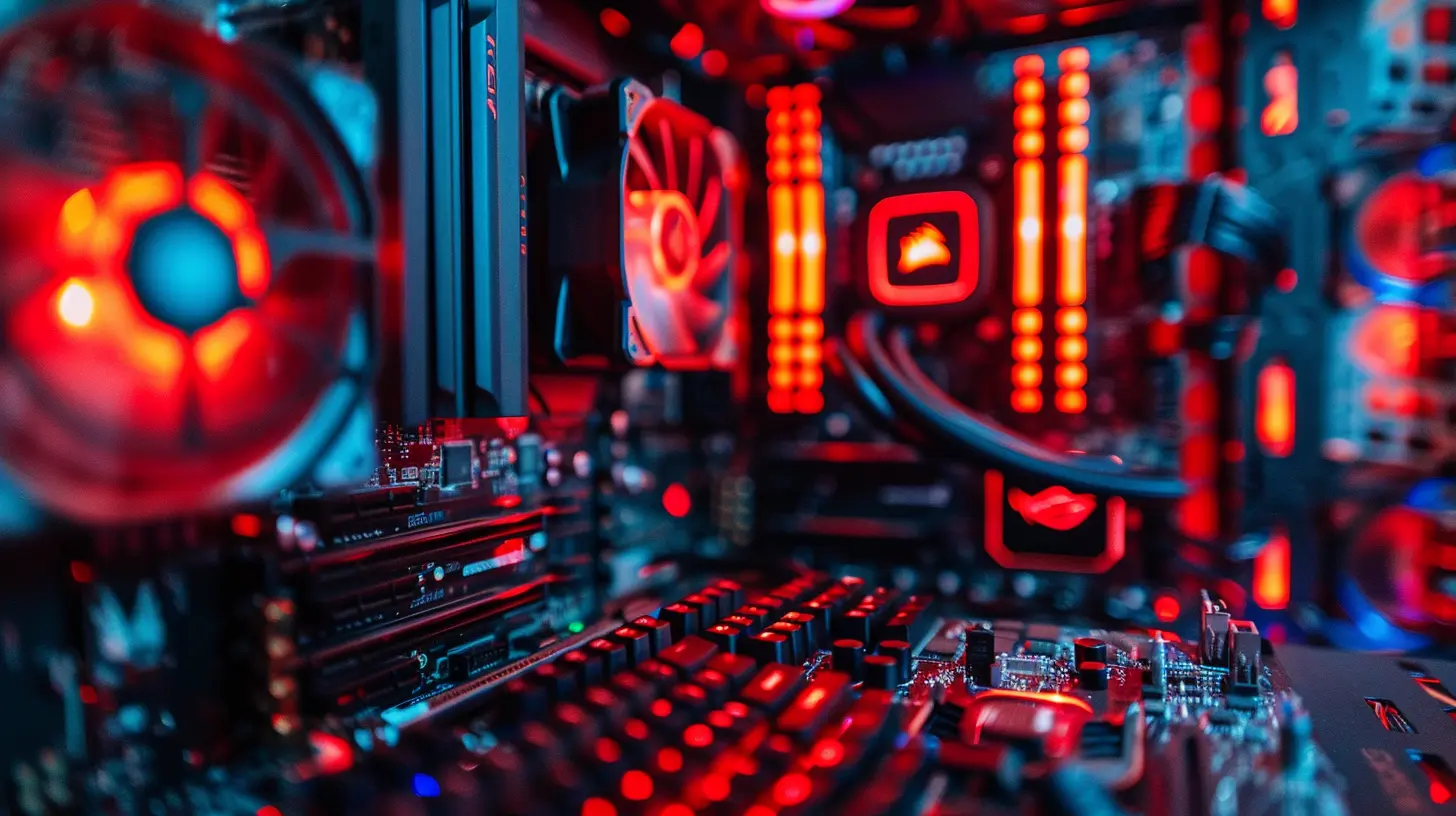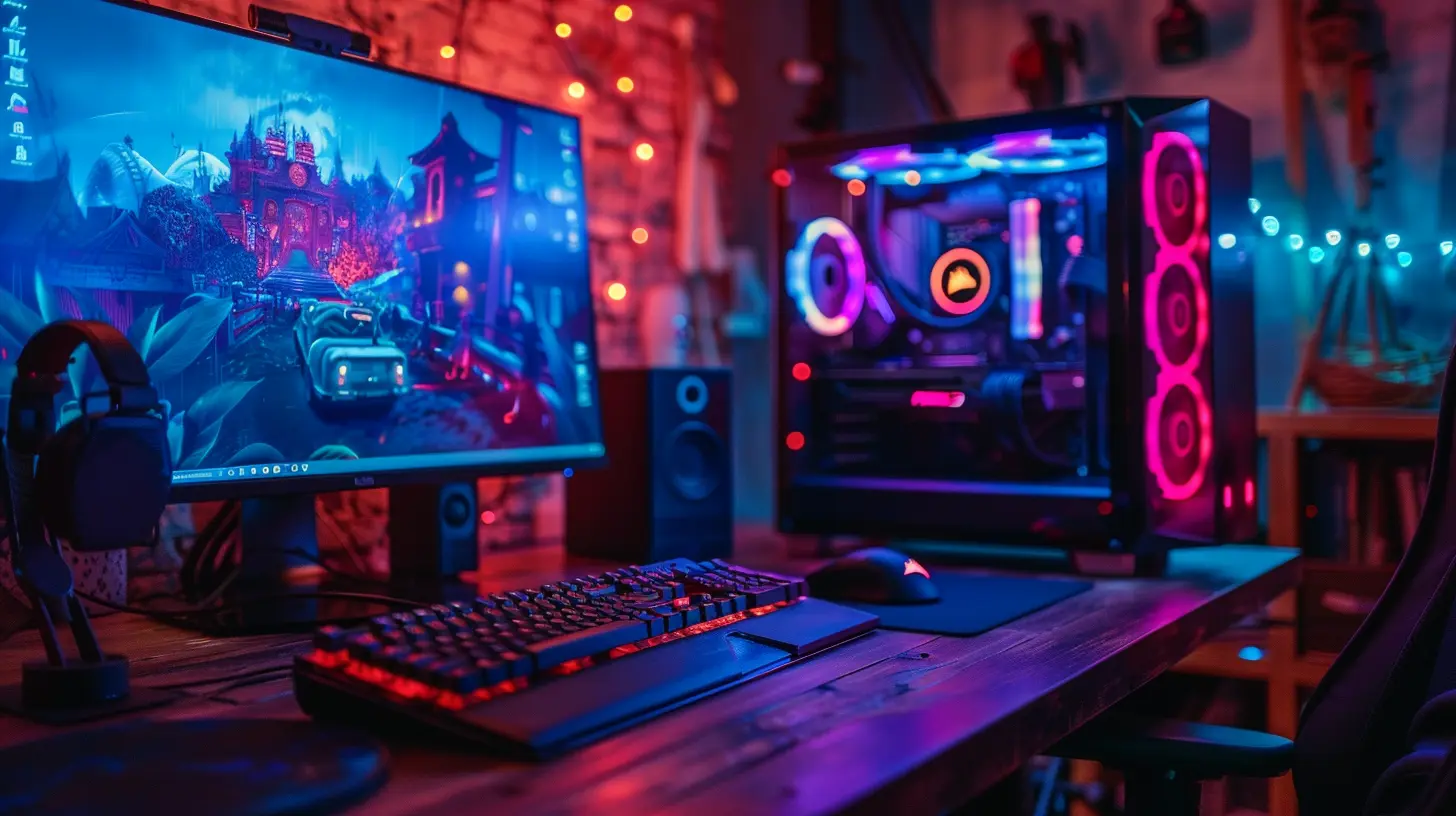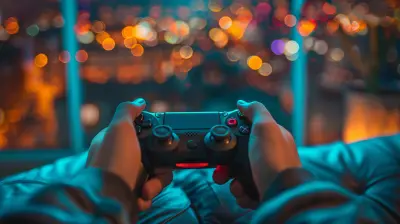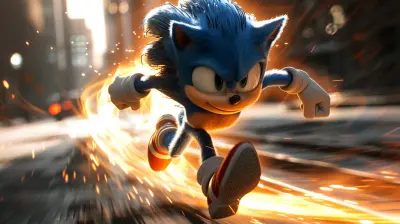How to Boost Your FPS without Upgrading Your PC
12 November 2025
Alright, so you find yourself staring at your game stuttering like it’s rehearsing for a soap opera. Your in-game character is running through an epic battle, but it feels more like a PowerPoint presentation. You’ve Googled upgrades, drooled over $1,500 GPUs, and then cried because your wallet just laughed at you. Fear not, fellow gamer! I’m here to tell you there are ways to squeeze out more FPS (frames per second) from your trusty ol’ rig without selling a kidney.
This guide is not some arcane sorcery; it’s just about tweaking, fiddling, and cajoling your PC into performing better. Ready? Let’s dive in!
What Is FPS and Why Does It Matter?
Let’s start with the basics (don’t worry, I’ll keep it short). FPS is how many frames your game displays per second. Higher FPS equals smoother gameplay. Think of it like comparing a Ferrari zooming down the highway (high FPS) to a tricycle struggling uphill (low FPS). No one likes a stuttering tricycle.Most gamers consider 60 FPS the sweet spot. Anything below 30 FPS, and you’re in headache territory. But hey, if we can push that number higher without reaching for the credit card, why not?
The 10 Commandments of Boosting FPS Without Upgrading Hardware
Here’s the deal: We’re going to look under the hood of your system, clean up some cobwebs, and maybe smack it with a digital wrench. Trust me, your PC is going to thank you. No upgrades, no shady hacks—just pure optimization.1. Lower Your In-Game Graphics Settings
Okay, this one's painfully obvious, but let’s address the elephant in the room. Do you really need ultra-high shadows that make individual blades of grass wave at you? Probably not.- Start with these tweaks:
- Set textures to medium or low.
- Turn off anti-aliasing unless jagged edges make your soul cry.
- Reduce shadow quality and draw distance.
Think of it like taking your PC to the gym. Lighter weights mean less strain, and suddenly, it can do more reps—err, frames.
2. Update Your Graphics Drivers
Outdated drivers are like running Windows XP in 2023—just no. GPU manufacturers release driver updates constantly to optimize performance for new games. So visit NVIDIA, AMD, or Intel’s website and get your driver game on!> Tip: Always choose the “clean install” option when updating drivers. It’s like hitting the reset button and washing away old junk.
3. Close Background Programs
Does your PC feel slow because it’s secretly running 47 Chrome tabs, Discord, Spotify, and 3 Excel spreadsheets while you’re gaming? Mystery solved.- Open Task Manager (Ctrl + Shift + Esc on Windows).
- Identify resource hogs (looking at you, Chrome).
- End non-essential tasks. Remember, your PC needs focus. Multitasking is for humans, not machines.
4. Optimize Windows Settings
Did you know Windows comes with some built-in performance killers? What a betrayal.- Turn on Game Mode: It prioritizes your game over pesky background processes.
- Go to Settings > Gaming > Game Mode > Turn it on.
- Disable unnecessary visual effects: Windows' animations might look snazzy, but they chew up resources.
- Right-click on "This PC" > Properties > Advanced System Settings > Performance Settings > Adjust for best performance.
Remember, we’re going for speed, not beauty. You can sacrifice a few sparkles.
5. Free Up Disk Space
A clogged hard drive is like trying to run a marathon in tight jeans—it’s not going to end well. Free up some space!- Uninstall unused programs: When was the last time you used Photo Editor 2007?
- Delete temporary files: Use Disk Cleanup (Windows Search > Disk Cleanup).
- Move large files: Transfer movies, games, or photos to an external drive.
A cluttered hard drive can bottleneck your system. Let’s Marie Kondo your storage.
6. Overclock Your GPU
Sounds scary, right? Overclocking isn’t as terrifying as it sounds. Think of it as giving your GPU an energy drink.- Use software like MSI Afterburner: It’s free and beginner-friendly.
- Increase clock speed slowly—baby steps, my friend. Test stability after every tweak.
Small overclocks can have a big impact. Just don’t push it too far, or your PC might get spicy (literally).
7. Tweak Game-Specific Settings
Some games are just poorly optimized (cough Cyberpunk 2077 cough). Look up guides for your specific game. Many have advanced settings you can tweak to squeeze out extra frames.For example:
- Enable DirectX 12 or Vulkan in supported games. These modern APIs can improve performance significantly.
- Check for community mods or patches. Sometimes modders fix what developers couldn’t.
Your game, your rules—make it work for you.
8. Defrag Your Hard Drive (HDD Users Only)
If you're rocking an old-school hard drive (HDD), defragmentation can help.- Search for "Defragment and Optimize Drives" in the Windows search bar.
- Select your HDD and hit "Optimize."
For SSD users: Don’t you dare! SSDs don’t need defragging—it can actually shorten their lifespan.
9. Adjust Your Resolution
Scaling down your game’s resolution is like driving with a smaller windshield. Sure, the view’s not as pretty, but at least your car (PC) runs better.- Try 1600x900 or even 1280x720 if necessary.
- Pair it with lower settings to really see the difference.
You might not notice the drop in resolution after 5 minutes of frantic gameplay. Plus, who’s got time to admire the scenery when you’re dodging headshots?
10. Keep Your PC Cool
Your PC is like a diva—it doesn’t perform well when it’s overheating. A hot GPU or CPU will throttle down its performance to avoid frying itself.- Clean your fans: Dust bunnies are NOT your PC’s friends.
- Improve airflow: Make sure your PC has space to breathe. No shoving it in a cramped cabinet.
- Consider reapplying thermal paste: Over time, thermal paste can degrade, causing higher temps.
Think of cooling as giving your computer a spa day—it’s all about self-care.
Bonus Tip: Use Performance Monitoring Software
Want to feel like a tech wizard? Download tools like MSI Afterburner, HWMonitor, or FPS Monitor. These let you track FPS, temperatures, and resource usage in real time. You’ll know exactly what’s holding your performance hostage.
Why Attitude Matters More Than Specs
Here’s the thing: PC gaming isn’t always about having the shiniest hardware. It’s about making the most of what you’ve got. Tweaking settings, optimizing software, and shedding unnecessary baggage can do wonders. Plus, let’s be honest, isn’t it satisfying to outsmart your machine?So go forth, tweak like a mad scientist, and turn that potato into a performance powerhouse. And remember, every extra FPS is one step closer to your glorious victory screen.
all images in this post were generated using AI tools
Category:
Gaming TipsAuthor:

Audrey McGhee
Discussion
rate this article
1 comments
Petra Gomez
Stop blaming your hardware! Master these tweaks, optimize settings, and unleash your PC's potential. Champion performance without emptying your wallet—get gaming like a pro today!
November 12, 2025 at 5:46 AM


